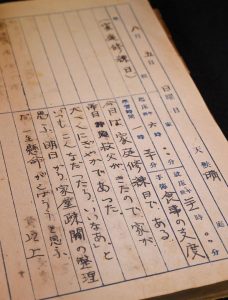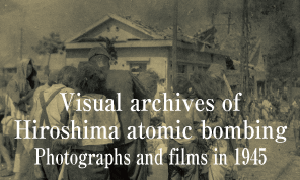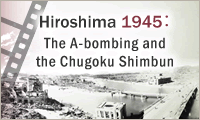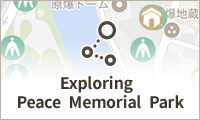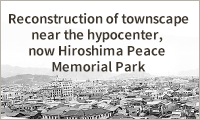Diary of Yoko Moriwaki, 13-year-old victim of A-bombing, describing daily life until the day before, to be donated to Peace Museum by family
Mar. 13, 2025
by Yuji Yamamoto, Staff Writer
The diary of Yoko Moriwaki, a first-year student at First Hiroshima Prefectural Girls’ High School (now Minami High School), who died in the atomic bombing on August 6, 1945, is expected to be donated to the Peace Memorial Museum (located in Hiroshima’s Naka Ward). The diary was written until the day before the A-bombing and is known as a keepsake symbolizing the daily life of a 13-year-old girl during the war and the tragedy of the A-bombing. The museum staff said, “It is valuable because much of the handwriting remains. We want to preserve it and make it public so that more people can learn about it.”
The diary measures 21 centimeters in length and 15 centimeters in width, with a cover made of red checked chiyogami (colored Japanese paper printed with beautiful patterns). It begins on April 6, the day she entered school, conveying the girl’s true nature and life during wartime. Ms. Moriwaki was exposed to the A-bombing while she was helping demolish buildings to create of fire lanes in Koami-cho (now part of Naka Ward), about 0.8 kilometers from the hypocenter. She suffered severe burns and passed away that night on August 6.
She was commuting from present-day Miyajima Island in Hatsukaichi, which is why her diary was spared from the A-bombing. Koji Hosokawa, her elder brother and an A-bomb survivor who passed away in 2023 at the age of 95, published Yoko Moriwaki’s Diary in 1996. It was later included in a junior high school textbook and published in English, spreading all over the world.
Mr. Hosokawa had donated her clothes and other items but said, “If I parted with this diary, I would feel as if there were a hole in my body,” so he kept the diary until he died. He also said, “When I die, please put this in my coffin.”
Yo, 65, Mr. Hosokawa’s eldest son, who lives in Hiroshima’s Naka Ward, serves as a Family A-bomb Legacy Successor, a program organized by the Hiroshima City government. While wanting to honor his father’s wishes, he felt the A-bomb experience should not end as a personal memory. Considering that the diary’s cover was torn and the binding was so damaged that it could fall apart at any time, he decided to donate it. He said, “I hope it will be useful for world peace.”
Besides the diary, her beloved fountain pen and about 30 notebooks she used as a National School student will be donated to the Peace Memorial Museum. Yukimi Dohi, a curator at the museum said, “Not only the entries in the diary but also her brother’s testimony makes the evidence of her life feel real.”
(Originally published on March 13, 2025)
The diary of Yoko Moriwaki, a first-year student at First Hiroshima Prefectural Girls’ High School (now Minami High School), who died in the atomic bombing on August 6, 1945, is expected to be donated to the Peace Memorial Museum (located in Hiroshima’s Naka Ward). The diary was written until the day before the A-bombing and is known as a keepsake symbolizing the daily life of a 13-year-old girl during the war and the tragedy of the A-bombing. The museum staff said, “It is valuable because much of the handwriting remains. We want to preserve it and make it public so that more people can learn about it.”
The diary measures 21 centimeters in length and 15 centimeters in width, with a cover made of red checked chiyogami (colored Japanese paper printed with beautiful patterns). It begins on April 6, the day she entered school, conveying the girl’s true nature and life during wartime. Ms. Moriwaki was exposed to the A-bombing while she was helping demolish buildings to create of fire lanes in Koami-cho (now part of Naka Ward), about 0.8 kilometers from the hypocenter. She suffered severe burns and passed away that night on August 6.
She was commuting from present-day Miyajima Island in Hatsukaichi, which is why her diary was spared from the A-bombing. Koji Hosokawa, her elder brother and an A-bomb survivor who passed away in 2023 at the age of 95, published Yoko Moriwaki’s Diary in 1996. It was later included in a junior high school textbook and published in English, spreading all over the world.
Mr. Hosokawa had donated her clothes and other items but said, “If I parted with this diary, I would feel as if there were a hole in my body,” so he kept the diary until he died. He also said, “When I die, please put this in my coffin.”
Yo, 65, Mr. Hosokawa’s eldest son, who lives in Hiroshima’s Naka Ward, serves as a Family A-bomb Legacy Successor, a program organized by the Hiroshima City government. While wanting to honor his father’s wishes, he felt the A-bomb experience should not end as a personal memory. Considering that the diary’s cover was torn and the binding was so damaged that it could fall apart at any time, he decided to donate it. He said, “I hope it will be useful for world peace.”
Besides the diary, her beloved fountain pen and about 30 notebooks she used as a National School student will be donated to the Peace Memorial Museum. Yukimi Dohi, a curator at the museum said, “Not only the entries in the diary but also her brother’s testimony makes the evidence of her life feel real.”
(Originally published on March 13, 2025)



